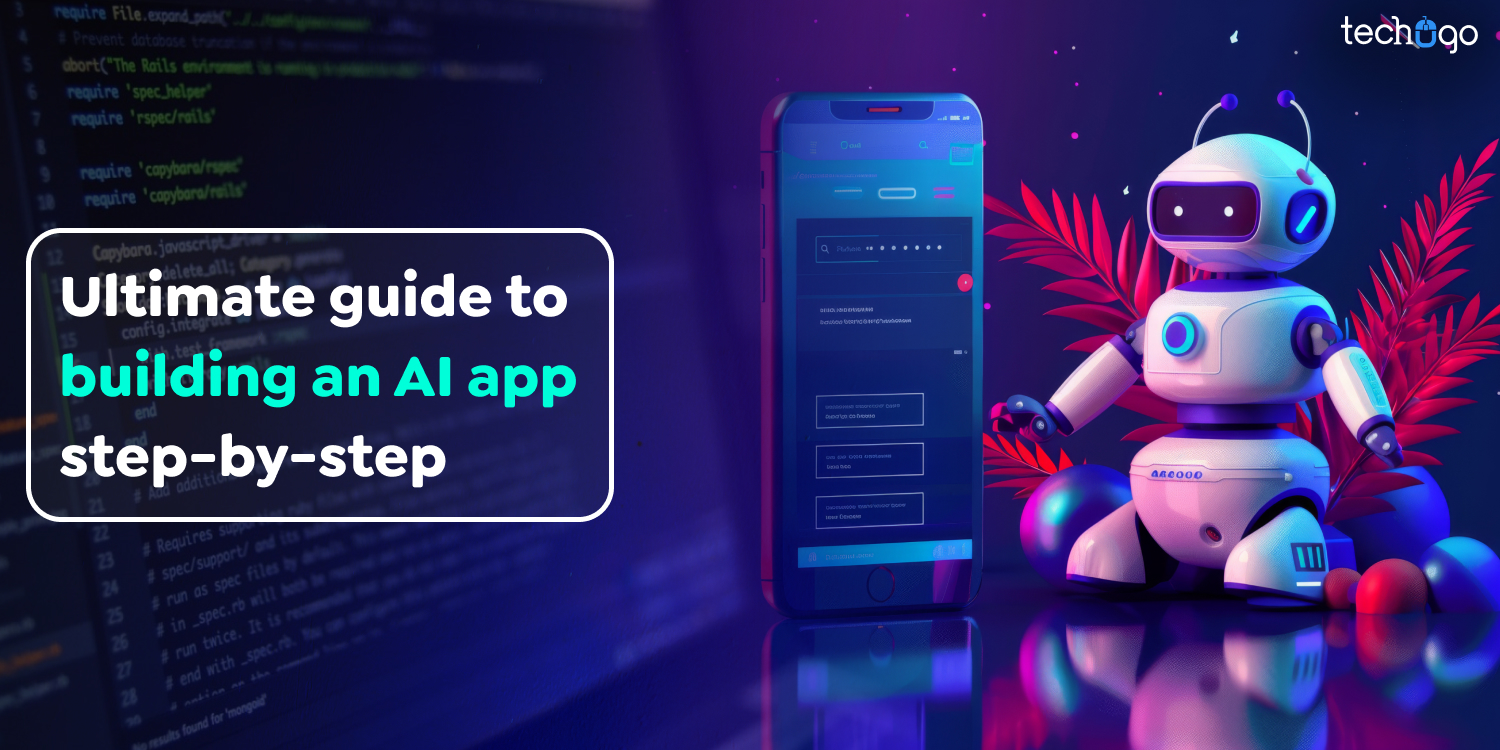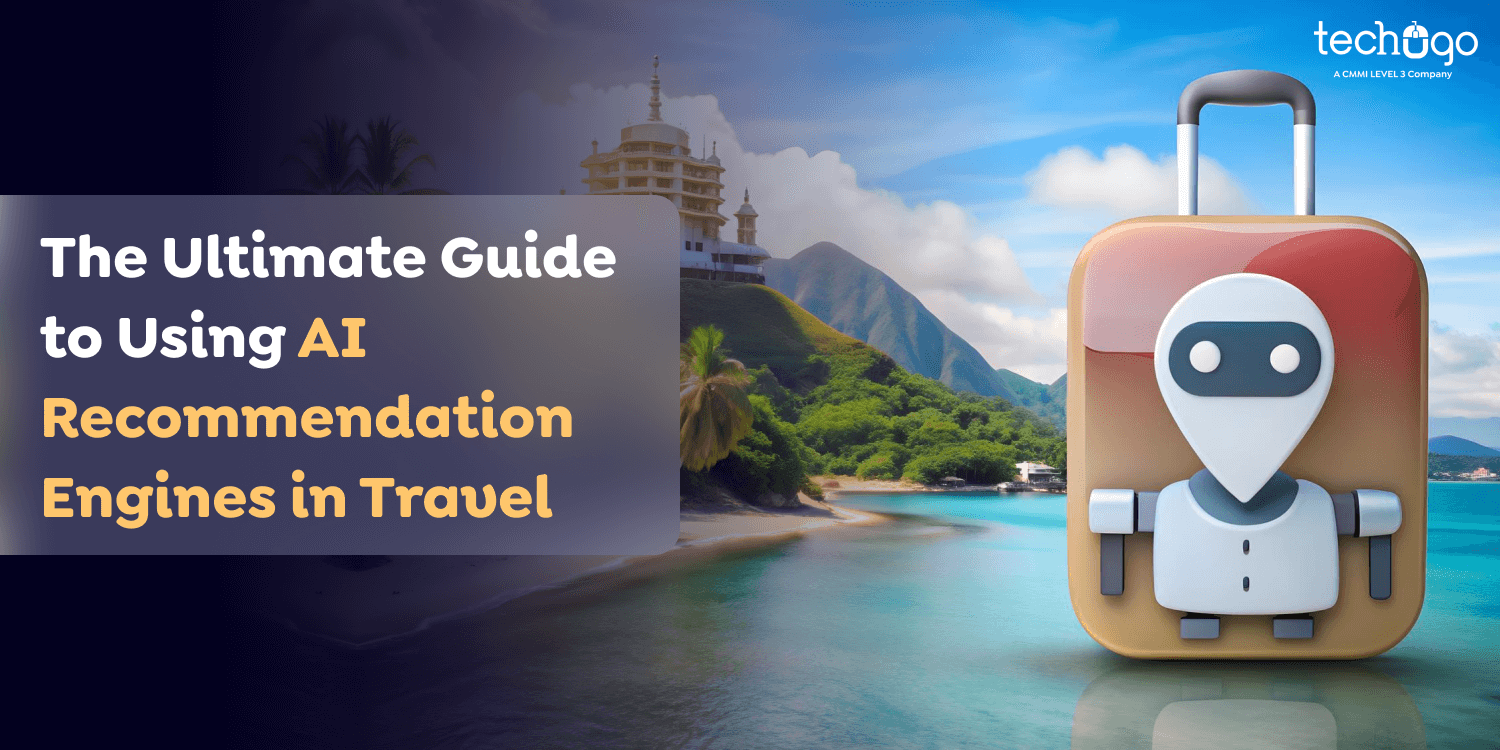25 Jul 2024
Updated on January 31st, 2025
How to Develop a Successful Virtual Reality Application
Matthew Connor
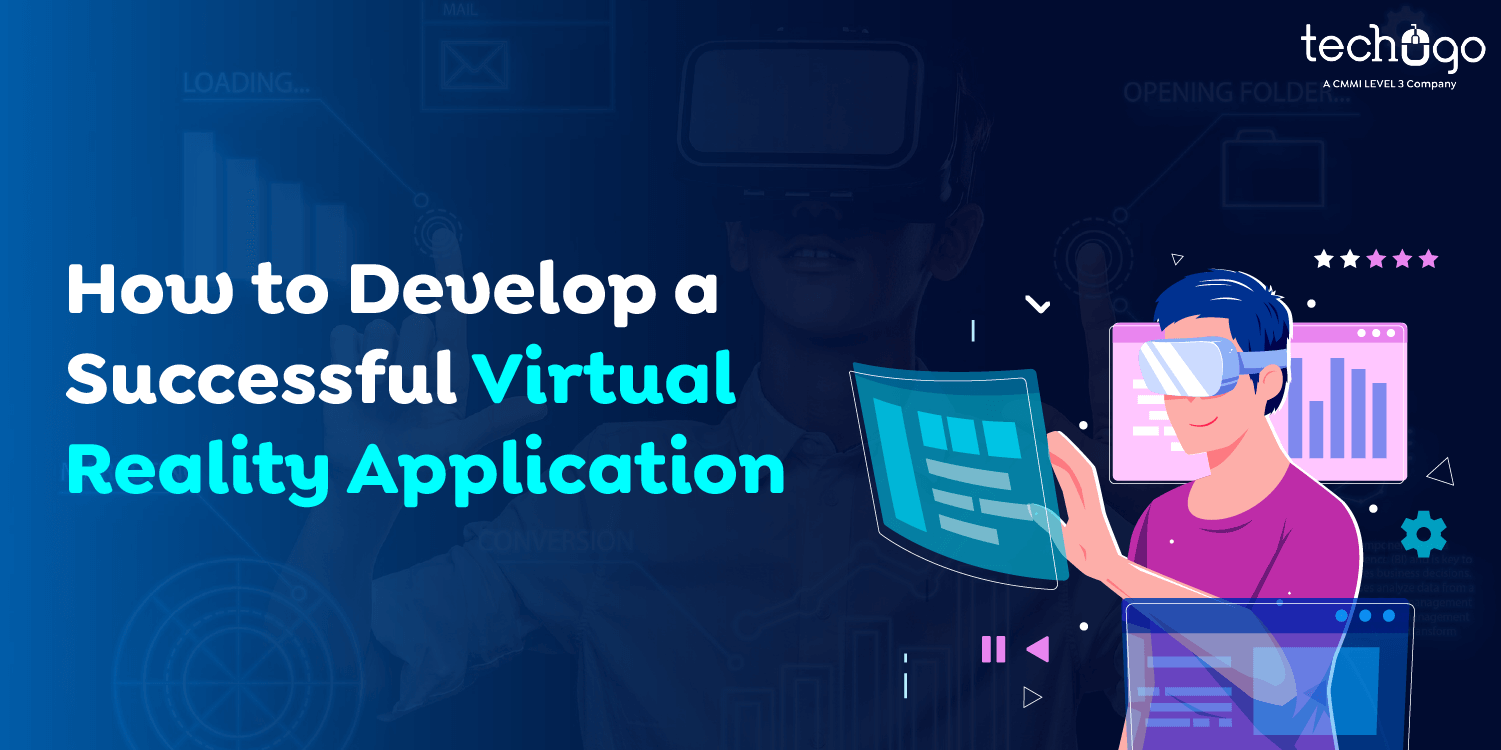
There is no doubt that anything can be converted into a virtual world. You need to browse through the VR store to experience it. You can swim with dolphins, make up your fantasies about playing pirates, and immerse yourself and your children in an education about the stars in the sky. There’s also a Jaguar racing simulator, a virtual tour through GE’s wind farms that are smart in China, and an outline of the Western Sydney University campus.
There are hundreds of experiences accessible through a virtual reality application that are as engaging and realistic as you think. However, they’re available and accessible to everyone, and they collect user reviews and bring benefits to their creators. If you’re looking to learn how to develop virtual reality applications to benefit your employees, customers, or just for the benefit of humanity, read on.
What is the VR App?
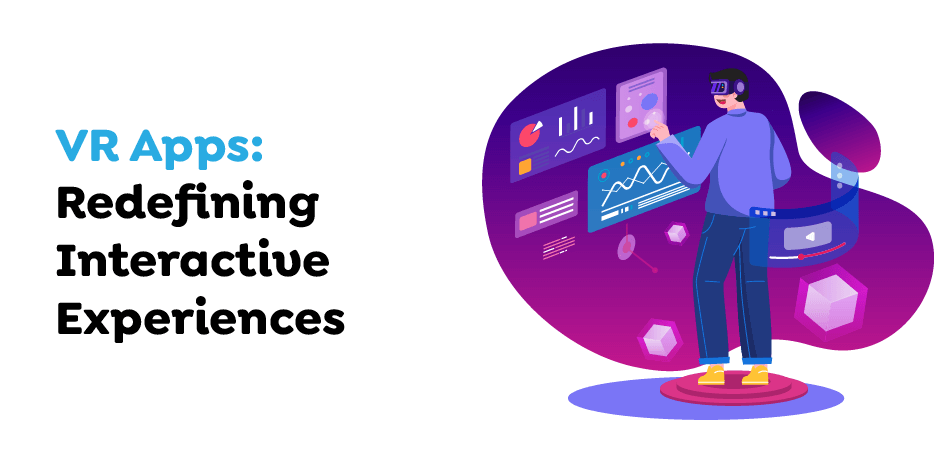
Virtual Reality is a computer technology that creates artificial environments that are interactive and consist of 3D stereoscopic realistic physical environments.
Computer-based applications, such as video games or apps to watch films, let us become immersed in a completely virtual world. When we use the computer, we can create our own immersive worlds. With smartphones, this is accessible to us at any time.
So, how can VR be so engaging?
The first step is to recreate the real-world environment you live in using computer-generated images. Third, the three-dimensional representations of the environments appear on the screen. This allows viewers to move and rotate the images, making them seem floating. Thirdly, the vision of the viewer is blurred with a headset, allowing these images as if they are floating in space and within the viewer. Combining these three factors provides a feeling of being in an imaginary world, even though the images aren’t in the real world.
That’s VR, and it is easy to understand.
Benefits of VR Applications for Business
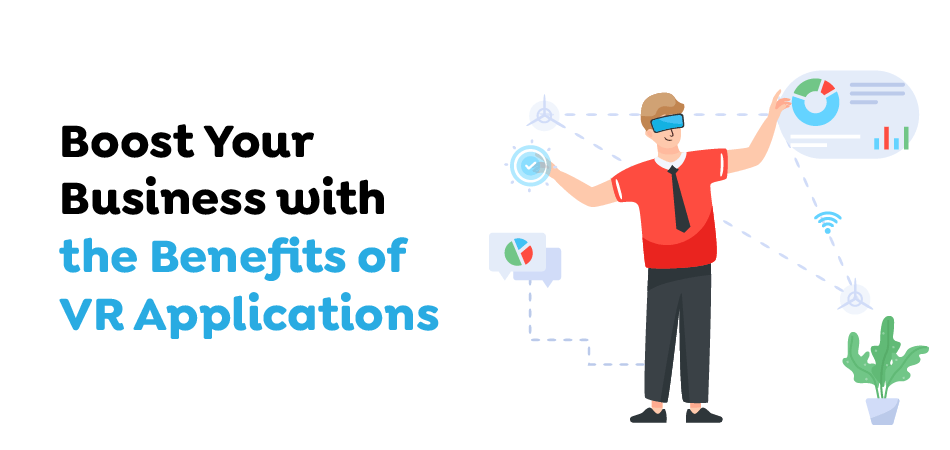
When VR was only coming into existence during the 60s, it barely resembled the current virtual reality experiences we’re used to. At the time, it was an idea that one day, businesses would be able to use VR in a beneficial way. Before you decide to develop VR material for Google Cardboard, Samsung Gear VR, HTC Vive, Oculus Rift, Google Daydream, or any other VR platform, it’s best to be clear about the advantages you’re looking to gain by creating content specifically for VR.
Innovative Methods to Attract Customers
VR technology allows businesses to completely engage with their customers, even before buying from them. Virtual Reality will enable businesses to create a new connection and trust between their company, their brand,d, and their clients.
Effective Product Development
Companies that concentrate on developing real-life products need to take advantage of virtual rooms. Virtual rooms can enhance teams’ efficiency. VR-powered prototypes permit you to interact with a product and then evaluate it before you experience it. Engineers, developers, and designers are more productive and collaborate with VR. Therefore, using VR demos in meetings is a fantastic method to show the desired results to those involved.
Immersive Marketing
Virtual Reality technologies also provide a reliable way to immerse customers in digital worlds, which allows users to engage with businesses and brands in more significant ways. VR shifts marketing away from telling tales to providing digital experiences, allowing customers to interact with a brand as well as its products. VR apps enable companies to interact with customers in ways they might not have previously considered.
Also Read: How to Develop an AI App: From Concept to Launch
Virtual Reality: Use-Cases
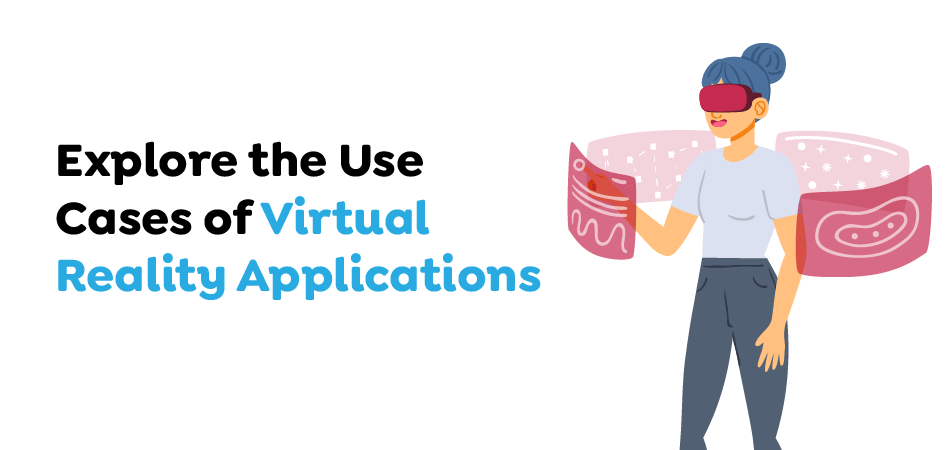
A virtual reality application uses Virtual Reality, an immersive experience that is digitally created to create the illusion of a virtual space. Many different fields use this idea, including architecture, education, digital marketing, robotics, engineering, healthcare, arts and heritage, archaeology, entertainment, science, psychology, and more. Before we proceed, we should take an in-depth study of VR apps and their applications.
Automotive Industry
Virtual Reality allows engineers and designers to play around with different automobile designs prior to creating costly prototypes. Many companies, such as BMW and Jaguar, utilize VR to conduct reviews of the engineering and design of their models.
This allows them to check the design’s visual appearance and blurring of the object. It assists in identifying the design before investing money in manufacturing parts. Virtual Reality has saved the automotive industry millions of dollars by reducing the price of a vehicle’s initial prototype.
Healthcare
Virtual reality applications in healthcare are having a major impact on the industry. Virtual models substitute for real bodies to allow medical examiners to conduct their duties. VR aids in the relief of pain in burn injuries. VR can also treat mental health problems. Virtual Reality Exposure therapy is efficient in treating PTSD and anxiety.
Retail Industry
Have you ever wondered if you could try on the clothing and accessories you purchase online? The inability to do so leads to us buying the incorrect size, color, and other things. With the advent of VR, the situation can be altered when shopping online.
Many companies are working together to provide this shopping experience to their customers. EBay, in collaboration with Myer, has launched the first VR retail store.
Tourism and Navigation
Could you go to your vacation destination before you purchase those holiday packages? Virtual Reality applications build by a travel app development company makes this possible. By using VR, you can experience immersive virtual tours of restaurants, hotels, and tourist attractions. Thomas Cook founded the ‘Try before you fly’ service in 2015, allowing customers to experience their travels in VR before purchasing.
Google expeditions are yet another way of making travel more accessible. They let people discover coral reefs and even travel to Mars and back from the comfort of their own homes.
Real-Estate
Utilizing Virtual Reality applications developed by a real-estate app development company users can view homes from their own homes. This lets users explore properties online and view their preferred properties in person. Matterport is one such business that offers this service to its customers.
Education and Learning
The Education Industry has always looked for ways to make education available to everyone quickly and easily. Thus, many educational technologies are designed to facilitate the access of knowledge and information from all over the globe.
Virtual reality applications in education offer an immersive experience and help students learn. 53% of respondents are planning to utilize VR soon, and around 68% of respondents agreed that VR technology inspires students to study.
Sports Industry
Imagine a practice session for a sport anywhere, at any time, like you were on the court, on a field ice slope, or on a course. Through VR in the world of sports, speeding up the training process through immersive learning is possible.
Utilizing VR, viewers can view the games and determine what they would like to see. The game’s decision-makers can recreate the entire game and remove any confusion. In the end, it improves the players’ and fans’ experience. STRIVR is a great example of using VR in sports training.
Choosing the appropriate area for a VR application is a crucial first step. The entire virtual reality application development process depends on the field you select to build your virtual reality application for.
Also Read : How to Build a Real Estate App in 2024 for an Optimal User Experience?
How to Make a VR App?
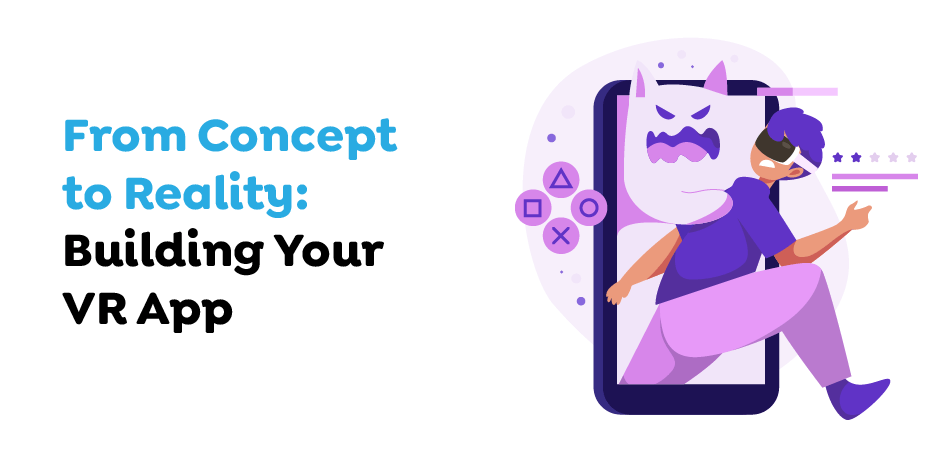
Developing a virtual reality application is a complicated procedure requiring experience in several technologies to succeed in the commercial. The primary principle for developing a virtual reality application is to design high-performance applications, have a low-power-consuming design, and have flawless application code.
It also covers hardware and software design, which requires the development of prototyping tools, frameworks for development, libraries for development, and more. Let’s take a thorough step-by-step tutorial on how to develop virtual reality applications.
Define Major Goals for the App
Before you begin researching how to create a virtual reality application, you should consider deciding the primary goals for your app. This is the essential step to making a virtual app. It is essential to establish the goals you would like to achieve with the application. It could be a standalone experience, a gaming experience, a touring experience, and so on.
First, you need to be clear about what you’re looking to build. Only then can you begin to answer questions such as how to build a virtual reality application, for instance. Without clear goals, it is impossible to create a perfect application experience.
It is crucial to think about what your users would like from the app and what you, as an app creator, would like users to feel. Consider features that can provide the user with an immersive and thrilling experience. Also, consider making your content accessible via the internet and making it more popular among VR enthusiasts via various social media platforms.
Beyond the possibility of reaching out to a wider market, you should create an interface that can help keep users engaged and increase engagement. Also, you should consider offering a comprehensive guide with videos, explanations, and more.
Virtual Reality for Smartphones
Virtual reality applications on smartphones are a possibility that several tech giants are trying to meet. Specific VR platforms such as Google Daydream require launching an entirely separate application environment, which can be a hassle for users.
For instance, cutting off Apple’s headset cord and then blocking the phone’s screen allows for iPhone VR apps. In addition, phone-based VR has its share of other issues. In the end, it’s not able to offer the same immersive physical experiences as desktop-based VR.
Virtual Reality for computers
The VR applications are designed to work with Windows, macOS, Linux, and more and are the most compatible. Oculus Rift, PlayStation VR, HTC Vive, and so on are a few of the most popular gadgets available today to provide an immersive experience. They also make this VR exploration feasible. Many different reasons, such as gaming, education, and more, can benefit from this experience.
VR is gaining popularity every day, and developers are pondering how to adapt their games to a wider audience. While creating VR games might require special skills, developers are learning the specific design skills they need to develop various gaming experiences.
Select a Platform
The initial step in creating a Virtual Reality application is choosing the appropriate platform and Software Development Kit. The choice of a deployment platform is vital to the app development process. The choice of platforms for apps directly affects the app’s adoption rate, which has an enormous and direct effect on the amount of revenue.
Here are several crucial considerations when selecting the optimal platform for your requirements: What device will you develop a virtual-reality app for? Are you planning to create a mobile-friendly virtual reality application or one for VR headsets? If you plan to build a smartphone VR application, would the app be for Android, iOS, or both? Are you planning to create a VR application within one of the VR companies, such as Oculus, or is it an independent app?
It is possible to use specific VR platforms such as SteamVR, XboxVR, and Oculus Home to facilitate VR development. They provide a complete set of VR tools for development. If you choose to use them, you do not require any other software install. So, beginning with a brand-specific SDK is the best initial step.
Also, it would help if you thought about the launch platform for your application. The most well-known platforms include mobile VR headsets (Samsung Gear) and the latest affordable standalone options (Oculus Go). If you want to attract high-end gamers, then you should begin by using Oculus Rift, HTC Vive, and others and select platforms that allow you to reach your largest potential customers.
Game Engines
Picking the appropriate game engine is a further important stage in the VR app development process. It is where you store the information that users will be able to view inside their own virtual Reality. The game engines render pictures and offer ways for the user to input. Examples of popular game engines include the ones from Nvidia, Havok, Unreal Engine, Gear VR’s Unity3D, Unity Game Studio, and many more.
Today, the majority of game engines are accessible for download. Certain gaming engines are coupled with certain software development kits, and multiple APIs are utilized to personalize these game engines.
Frameworks and Libraries
The next step is to select the appropriate library and framework. WebVR is JavaScript that runs on Internet browsers and offers an API. This API within VR applications allows you to enjoy VR on most modern browsers.
WebGL objects are graphics libraries. Depending on the hardware device, WebGL dynamics change in response to time or event handling. These libraries provide a live connection between the application code and hardware, allowing it to render graphics.
Design and Prototype Tools
The next thing to do is to ensure that your VR app appears attractive. The team developing it has to consider prototyping a VR experience to test and validate it in the design of the app.
Prototyping is a great way to create a 360-degree image that will give you a sense of using sensors, the user’s viewing location, and other features. Developers should be acquainted with prototyping using various programs, such as Google Blocks and Photoshop.
Hardware
Understanding the type of hardware you’ll require to operate your VR application is crucial. The most well-known choices consist of HTC Vive and Oculus Rift VR headsets. It is best to pick one that consumes less power and provides the most comfortable range of motion. Sensor systems made by Rift and Vive come with minimal hardware specifications. In addition, there are many VR devices, including a few that are listed below:
- Console
- Light VR headsets for mobile phones
- Premium VR headsets for mobile phones
- VR headsets connected to PCs that are not connected
- Headsets that stand alone
- VR haptic feedback suit
Monetization Methods for VR Applications
Because most applications are entirely free from the time they are installed, a business model must be adjusted to bring this level up. Thus, monetizing apps for profit is a crucial element. Monetizing Strategies require a lot of marketing support before and after the app’s launch. But, deciding on a plan from the start will allow you to create the best way to maximize the benefits of your fitness and health apps.
The most well-known methods of monetization for Virtual reality apps are:
In-app Advertising Model
The model for advertising in apps is effective. It is a simple process. App developers place advertisements in their mobile applications, and in return, they are paid for this. This is just one of the most commonly utilized monetization methods in VR apps. These apps show ads in general at specific time intervals.
Paid Model
Users who pay for the paid model must pay a fee upfront before downloading. The user is charged a set price for the app regardless of the benefits they will receive. The majority of games’ VR apps utilize this model. It is possible to offer short trials to give the users a better idea about the application. This model is ideal for apps with high brand recognition and impressive reviews.
In-app Purchases
The in-app purchase model is well-known for its ability to earn huge sums of money through the sale of physical or virtual goods through the app. The purchase is a fixed commission paid by the app’s publishers to the app store owners. Apple and Google each take 30% of each in-app purchase made through any app.
Freemium Model
The freemium model lets users use the app’s essential features at no cost and then charges for upgrades or access to additional features. It’s a tactic widely employed by businesses to draw customers to their services and generate income. In the case of premium models, users can use the application for a lifetime, but they’ll need to pay to get certain benefits and features. This will help them build a sustainable enterprise rather than simply a one-time event.
Subscription
It’s akin to the free and premium models. A subscription is a monthly fixed cost paid by the user accessing the apps. The subscription model offers an assurance of repeat transactions. The cost of a subscription is less than the cost of one-time transactions to encourage users to make a long-term commitment. Companies that generate revenue from subscriptions are more likely to have higher revenue rankings.
Five fundamental methods for monetizing are employed in the VR app market. To figure out which one will suit your needs most, you must be aware of the primary goal of the app as well as the kind of users you plan to reach. You should also know the monetization models your competition uses and the most recent trends for in-app monetization.
How Much Does it Cost to Create a VR App?
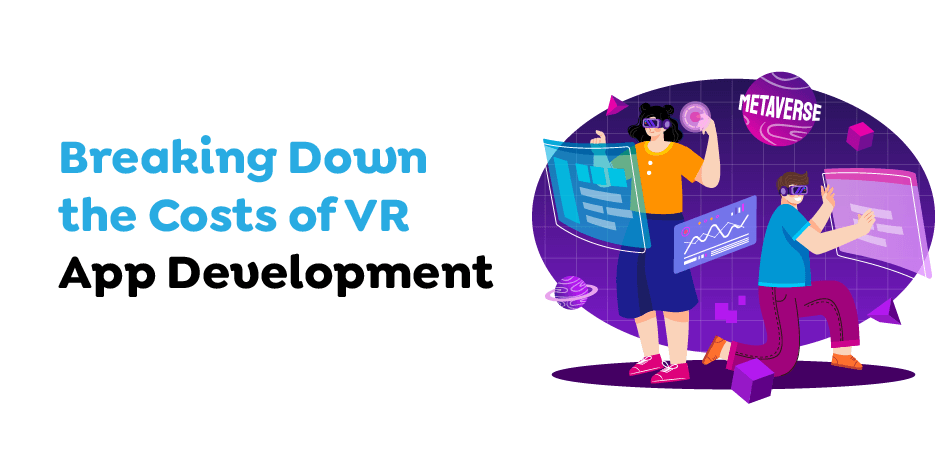
The process of creating VR-related content is the primary concern. Determining the cost of creating an application for VR is also crucial. To calculate the costs, businesses creating VR should take into consideration expense categories such as:
- The cost of manpower
- The tools used in the development process cost money.
- the IT infrastructure costs
- Other operating costs
If you’re a company planning to develop VR content, it’s crucial to consider your staff’s working speed to ensure the most realistic time to develop. The next step is to consider the global market demand for VR content. In addition, they will have to choose the best app development company. Compared to America and Europe, the cost of hiring a mobile app development company in Canada is usually low. The creation of virtual worlds or interactive virtual environments could also be a reference to almost all sectors.
Let’s go straight to the main point. The development of applications that use virtual reality development will include the following steps:
-
- Requirement Gathering & Analysis Phase
- UX/UI Design Development
-
Software Development
- Software Testing
- Deployment
- Maintenance
Several tech professionals will be involved in each phase. This includes UX/UI designers, software engineers, web developers, Android and iOS developers, VR developers, QA engineers, DevOps technicians, project managers, and a business analyst.
The cost of hiring a workforce is always highly dependent on the degree of expertise and, in turn, the complexity of the undertaking and the location. For example, employing developers from Eastern Europe will cost an average of 40 dollars per hour.
Why Choose Techugo for Your VR App Development Needs?
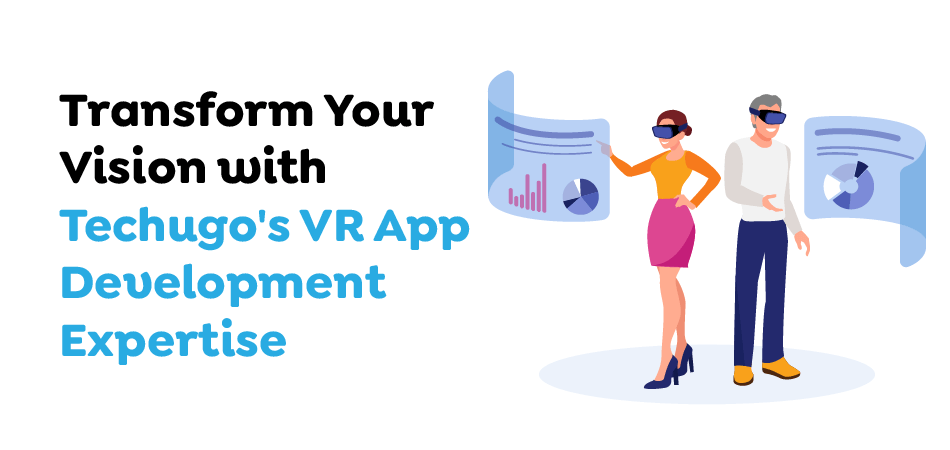
Techugo stands out as a premier choice for developing VR applications due to its vast expertise and inventive approach to leveraging cutting-edge technologies. With a proven track record in providing immersive and engaging VR experiences across different industries, Techugo, a mobile app development company in Canada excels in comprehending client needs, translating ideas into robust software solutions, and guaranteeing high-quality execution through every phase of development. Their dedication to pushing technological boundaries and giving exceptional user experiences makes them a trusted partner for firms looking to harness the strength of VR for competitive advantage.
Conclusion
The field of VR is an exciting field for company investment. We’ve delved into the topic of creating a virtual reality application and its cost. We believe that VR is and will continue to be an increasingly popular subject for startup companies.
3D VR videos and animations make VR applications distinct from other apps we’ve come to. It’s the thing that could result in a rise in the cost of mobile application development. However, it won’t be an easy task. It would help if you took the risk. Look into the potential market for your idea, work hard, and begin to use VR to get your customers involved.
Get in touch with us to start developing immersive VR applications that elevate your business.
Get In touch
We are excited to here from you and let’s start something special Together. Call Us for any inquiry.
Write us
sales@techugo.caJust a call away
About you

